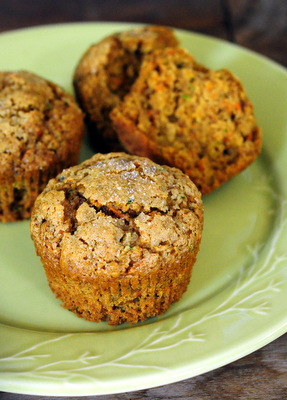
Pumpkins come in all shapes and sizes, and during the fall it seems like every single one of them is on display at the grocery store. There are large pumpkins for carving, oddly shaped and colored pumpkins for decorating and smaller pumpkins for cooking. Canned pumpkin is what most of us rely on for baking, since it is so convenient, but you can use fresh pumpkin in your recipes as well. Fresh pumpkin must be cooked and cooled before you can make your own pumpkin puree. There may be a lot of pumpkins to choose from at the market, but not all pumpkins are created equal when it comes to baking.
The best pumpkins for baking are smaller pumpkins – typically less than 10 pounds – with firm, dense flesh that isn’t at all stringy. Sugar Pumpkins are one of the most common baking pumpkins and are often labeled “pie pumpkins,” since they fit the bill texture-wise and have a nice sweetness to their flesh. Other types of pumpkins that are great for baking include Baby Pam, Autumn Gold, Fairytale and Cinderella Pumpkins, all of which have a good consistency and flavor. Like the sugar pumpkins, these pumpkins are also often labeled as “pie pumpkins.” There are many heirloom varieties of pumpkins, just like other vegetables, and a farmers’ market will have a wider selection than a grocery store and you’ll be able to get advice from the growers on which pumpkins are their favorites – even if you haven’t heard of those varieties before.
Since the texture of pumpkins can vary widely, many bakers turn to butternut squash when they want pumpkin. It has a nice sweetness to it and a very firm flesh that makes for a very smooth puree. You can easily use it in your baking without anyone being the wiser, especially if you’re adding brown sugar and spices to the mix.
At the end of the day, however, the easiest pumpkin to use for baking, hands down, is canned pumpkin. It requires no prep work and the consistency does not vary much between brands, so you will get a more consistent product every time you work with it. Even if you work with fresh pumpkin, too, you might want to keep a can or two of the canned stuff (and they make both organic and regular purees) on hand for last-minute pumpkin emergencies.






Swedey
December 21, 2013I grow Cinderella pumpkins and have found them to be watery when cooked, and very unsuitable for baking. They could be used for soup I suppose, but not baking.
carol
August 8, 2014Cinderella pumpkins make excellent baked goods. I grow all the pumpkins mentioned in the article and freeze a lot of pumpkin puree to use all winter or for the “pumpkin emergencies”. The key step is after the puree is made you drain it. Put the puree in a fine sieve or colander and allow the puree to drain for a couple of hours. The excess moisture will drain away and you will get a puree similar in consistency to the cooked down stuff you get in the can. However, it will be fresher tasting and each pumpkin will have a distinct flavor. Don’t throw away the drained juice. Use it for smoothies, pumpkin rissotto, soup stock, or any place you would use a veggie stock. It’s a little sweeter than veggie stock but it is delicious!
Linda Huth
October 25, 2014My favorite pumpkin to bake for pies is the Cinderella. I have found it to not be watery when baked. The flesh is nice and thick with a beautiful color. I just took me 3rd one for the season out of the oven. Pumpkin bread for us tomorrow!1